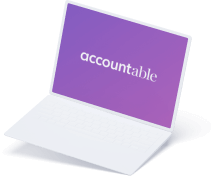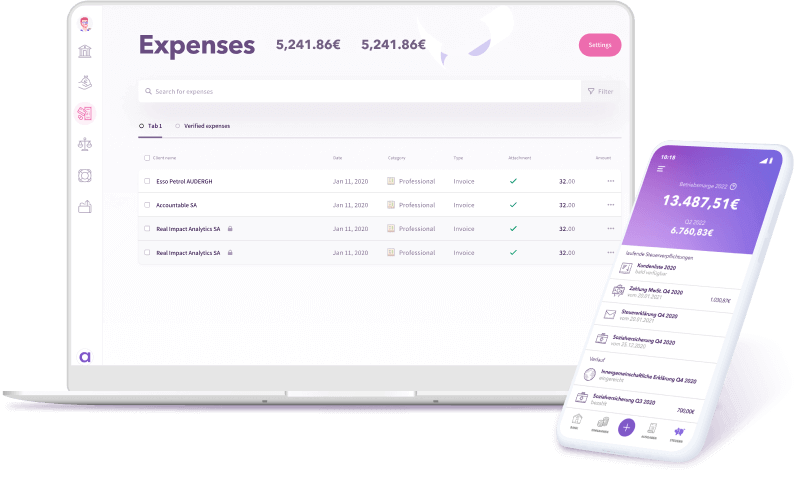
Calculating cash flow: How to keep track of your finances
Read in 3 minutes
As a self-employed person, you always need to keep an eye on your finances in order to run a successful business. One of the most important tools for checking the liquidity of your business is a cash flow calculation.
Cash flow is the net cash and cash equivalents that are transferred in and out of a company. In this article, we will take a closer look at calculating cash flow and show you how to do it using different methods.
Why is it important to calculate cash flow?
Calculating cash flow is crucial as it provides valuable insight into the financial health and performance of a company. Cash flow shows a company’s actual cash inflow and outflow, regardless of accounting principles and methods. This allows investors, lenders, and other stakeholders to better assess a company’s financial stability.
Positive cash flow indicates that with its current operations, the company can generate more than it spends. This can be an indicator of good financial performance, which demonstrates that the company is likely to be able to service its liabilities, make investments, and potentially pay dividends.
On the other hand, negative cash flow may indicate that a company is struggling to meet its current obligations and may have to rely on external sources of finance. In such cases, this may be a sign of financial instability and risk.
Cash flow analysis also enables informed decision-making. It helps management develop effective strategies to improve and manage cash flow and optimise working capital. Investors can use cash flow to assess how well a company is managing its resources and whether it has the potential for sustainable growth.
Overall, calculating cash flow is an essential tool for assessing a company’s financial health, making informed investment decisions, and minimising financial risks.
💡Tip from Accountable: With the Accountable tax software you have your bookkeeping and all tax returns under control as a self-employed in Germany. Test it now for free!
Calculating cash flow directly and indirectly
In this section, we show how best to calculate direct and indirect cash flow.
Calculating cash flow directly
The direct method of calculating cash flow is to consider the difference between inflow and outflow. We recommend the following formula:
Cash flow = cash received (inflow) – cash spent (outflow)
Inflow includes sales, payments of receivables, capital contributions, or loans.
Outflow means, for example, production costs, personnel costs, rental costs, or interest costs.
Calculating cash flow indirectly
The indirect method of calculating cash flow is based on net income for the year. However, net income also includes items that do not result in any cash flow. This is, for example, depreciation, which represents impairment of fixed assets. In such cases, it is added to net income, while write-downs are subtracted. In the indirect method, the data come from the company’s balance sheet.
Cash flow = net profit + non-cash costs – non-cash income
Non-cash costs include depreciation, inventory reduction, or book value impairment.
Non-cash income includes own work capitalised, inventory increases, and book value increases.
The company’s cash flow can also be divided into several areas:
Cash flow from operating activities: Shows the cash flow from the company’s operating activities.
Cash flow from investing activities: Indicates how much money has been invested (e.g. in new production equipment).
Cash flow from financing activities: e.g., capital purchases or loans.
Different methods of calculating cash flow
Other methods can be used to calculate cash flows more accurately, such as the discounted cash flow (DCF) method. This considers the time value of money and is particularly useful for long-term investment decisions.
To calculate discounted cash flows, future cash flows are predicted by setting a valuation date in the future. From this date onwards, all the company’s cash flows are “discounted”, meaning that they are reduced to present value.
Free cash flow results from deducting investment costs from net cash flow. They show how much money the company can use to pay dividends. This indicator is particularly important for lenders as it shows the extent to which debts can be repaid.
To calculate cash flow effectively, use a template or tools to help you simplify the process and avoid errors.
Example of a cash flow calculation
Let’s assume you run a small online business and your monthly sales income is €5,000. Your monthly operating costs are €3,000 and you have invested €2,000 in new office equipment.
Operating cash flow = €5,000 (income) – €3,000 (operating costs) = €2,000
Cash flow from investing activities = -€2,000 (investments)
Cashflow = €2,000 (Operating cash flow) – €2,000 (Cash flow from investing activities) = €0
In this example, the cash flow is balanced as the income would be sufficient to cover operating costs and investments.
Summary
Calculating cash flow is an essential tool for monitoring a company’s financial health. By analysing cash flow regularly, potential bottlenecks can be identified in time, and strategic decisions can be taken to improve liquidity.
Use the templates and tools to make the process easier and focus on what’s important – a successful business. Keep an eye on your finances and steer your business into the future in a confident way.
💡 With Accountable, the tax software for the self-employed, you can receive further helpful information on Selbstständigkeit (self-employment), Versicherungen (insurance), small businesses, Steuern (taxes) for part-time self-employment and Umsatzsteuervoranmeldung (advance VAT return). Start here!
Did you find what you were looking for?
Happy to hear!
Stay in the know! Leave your email to get notified about updates and our latest tips for freelancers like you.
We’re sorry to hear that.
Can you specify why this article wasn’t helpful for you?
Thank you for your response. 💜
We value your feedback and will use it to optimise our content.










